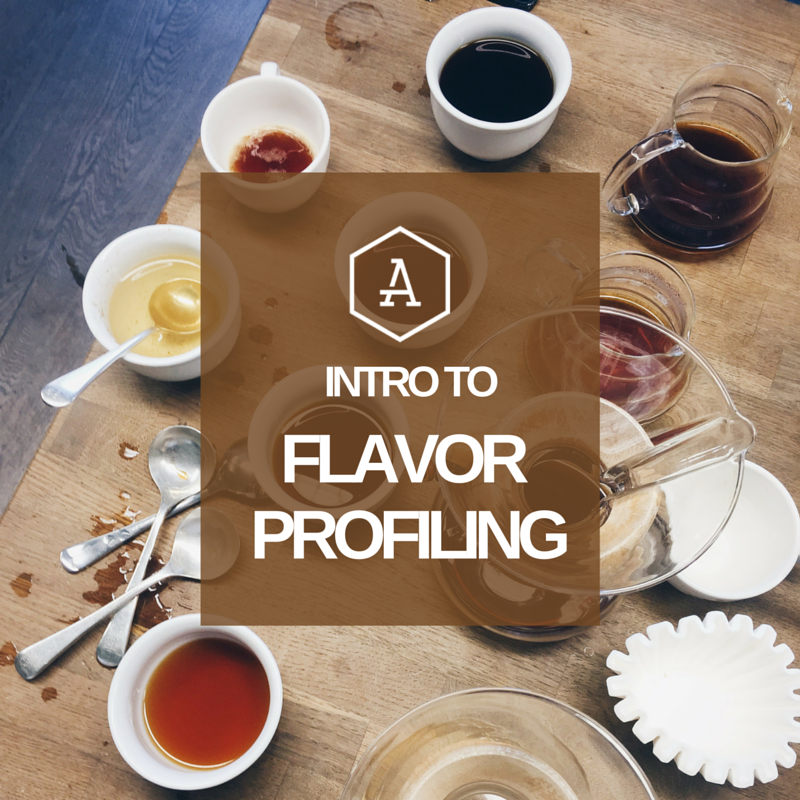If you had to describe coffee using one word, which would you use? For us, it would have to be complex. Coffee has over 1.500 aromatic and flavor compounds, making the 200 that wine has seem insignificant. Breaking down coffee’s flavor profile can be complicated, but we can start from the beginning.
What’s listed on your coffee packaging can be a good place to begin. Often you will read tasting notes such as chocolate or berries; this creates relatability. These are flavors that are common amongst humans, so they paint a picture of what one can expect from each cup. Then, you will usually read about the coffee’s nuances, created by differences in region, processing method, and roasting.
In describing a coffee, there are four common areas to be explored: acidity, aroma, body, and flavor. Acidity is the sensation of dryness in the back and under edges of the mouth, not to be confused with sourness. It’s a desirable quality that gives coffee its liveliness and bright taste. Aroma is where the subtleties like fruity, floral, and nutty come from. There are three main aromatic compounds: enzymatic (fruits and florals), sugar browning (nutty), and dry distillation (wood, leather, black pepper). Without aroma, we would only be able to taste sweet, sour, bitter, and salt, as the nose is responsible for 80% of taste. Body is the way the coffee feels in your mouth (viscosity vs. heaviness). The best way to relate this is by comparing the feel of whole milk with the feel of water. Flavor can be rich (full-bodied), complex (multi-flavored), or balanced (no one characteristic overpowers the other).
To give you a better idea of how many different factors go into describing a coffee’s flavor profile, take a look at Counter Culture Coffee’s Taster’s Flavor Wheel. Each characteristic expands upon itself over and over, allowing for some very precise descriptions of how our coffee tastes. This graphic is a very useful tool for deciphering the language of flavor profiling; you will probably recognize a lot of the terminology from coffee labels.
 The coffee industry, not unlike the wine industry, has its own tastings, where flavor profiles of different coffees are explored. The process, called cupping, results in each coffee receiving a grade based on its flavor profile and quality. If a coffee receives at least 85 points on a scale of 100, it can be recognized as a specialty coffee by the Specialty Coffee Association of America. We were able to learn more about this (really cool) process through firsthand experience with Tom at OR Coffee Roasters!
The coffee industry, not unlike the wine industry, has its own tastings, where flavor profiles of different coffees are explored. The process, called cupping, results in each coffee receiving a grade based on its flavor profile and quality. If a coffee receives at least 85 points on a scale of 100, it can be recognized as a specialty coffee by the Specialty Coffee Association of America. We were able to learn more about this (really cool) process through firsthand experience with Tom at OR Coffee Roasters!
In any case, the differences in a coffee’s flavor profile can be owed to several factors. Any alterations in a coffee’s processing or roasting will have an effect on the way it tastes. These differences can be explored later, but for now, take the time to sit down with your cup of coffee and notice the hundreds of aromas waiting to be discovered!
You can find a plethora of flavor profiles in our webshop:
- MOK – Honduras Norma Iris Faillos: cherry, cranberry, cardamon, and buttery body
- OR – Ethiopia Sidamo-1 Guji: violets and strawberries with a full body and high to medium acidity
Questions?
Ask our experts at get@apex.coffee or subscribe to the blog for more coffee stories!

